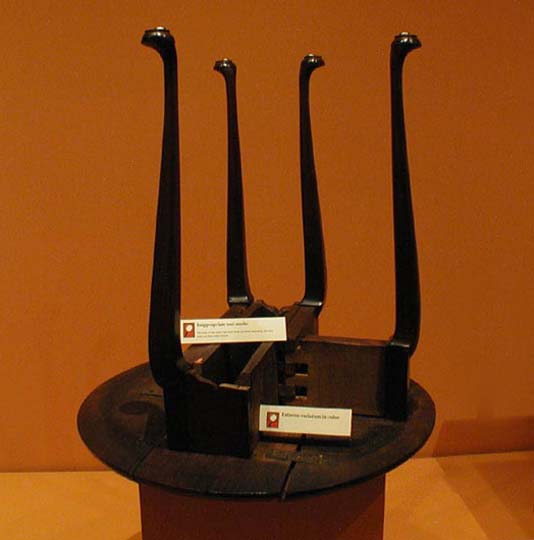Inappropriate tool marks
The ends of the inner rails have fresh saw kerfs indicating that they were cut from older boards. |

Oval table
American, c. 1961
Walnut, maple, and pine
Lent by the Chipstone Foundation 1961.20
Most of the bogus objects in the Chipstone collection were fabricated between 1950 and 1970, but many American furniture forms were faked earlier in the century. Small folding-leaf tables like this example are one of the most commonly faked forms, owing to their being "exceedingly rare" and of a "desirable small size"—both highly successful selling points with furniture collectors.
Small fake tables of this sort typically are made with parts from larger tables. The top of this piece is comprised of three boards that appear very different when viewed from the underside. If they had been exposed to the same levels of light and atmospheric conditions for over two hundred years, as would occur on a real antique, the color would match more closely. Moreover, the wood underneath the presumable ancient iron bracket on one leaf is identical to the surrounding area when it should be much lighter in color.
| Extreme variation in color |
